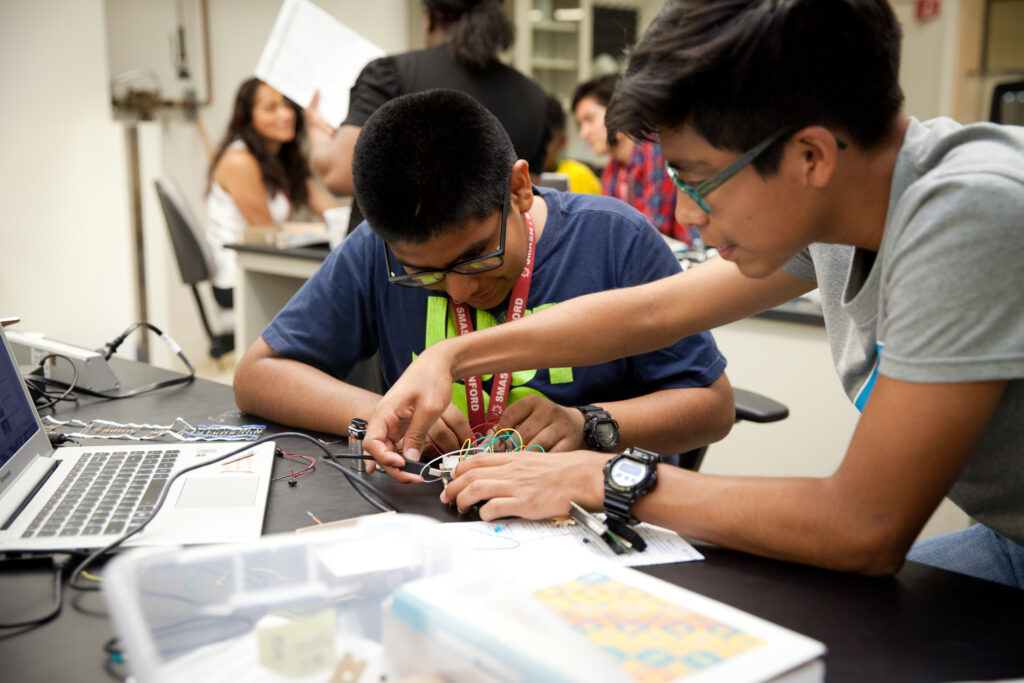Gradual Release

Bloom's Level
Use
Setting
Activity
Technology
Related Strategies
Description
Gradual release, also known as Gradual Release of Responsibility (GRR), is an instructional strategy with four distinct components that, together, move students toward independent learning: 1. Focus Lessons (“I do it”), 2. Guided Instruction (“We do it”), 3. Collaborative Learning (“You do it together”), and 4. Independent Learning (“You do it alone”). During Focused Instruction, the teacher provides direct instruction and modeling. During Guided Instruction, the teacher begins to release some responsibility to students by providing scaffolded instruction. Collaborative learning or group work provides even more responsibility to the students, but they can leverage their classmates for support with completing tasks. Finally, Independent Learning occurs when students are asked to complete a task on their own. Although the components are presented in a logical order, they do not have to be implemented in this order, and students can move back and forth between components as they gain proficiency. The idea is that all components are included in the course of the lesson to build confidence and move students toward independence.
When To Use It
As a learning strategy, use gradual release when you want students to:
- learn and apply a specific model, skill, or concept during a unit of study
- experience a gradual shift toward independence and autonomy
- engage in collaboratively learning
- gain confidence in their ability to transfer knowledge and skills
As an instructional strategy, use gradual release when you want to:
- model and scaffold instruction to meet the needs of diverse learners
- implement varying degrees of teacher- and student-centered instruction
- engage students in a highly structured learning process
- assess students in various settings (whole group, small group, and individual)
How To Use It
Advance Prep
- Carefully plan your lesson or unit of study to include the four components of the gradual release model:
- Focused Instruction: provide direct instruction and modeling.
- Guided Instruction: scaffold instruction using questions and cues to guide students toward understanding
- Collaborative learning: allow students to work in pairs or groups to explore concepts, solve problems, discuss ideas, and provide peer feedback
- Independent Learning: have students apply their knowledge and skills to complete tasks on their own
*Assess students during each component and decide whether to revisit components to meet their needs. Often teachers go back and forth between stages and proceed in an order that is most appropriate for their learning goals and student needs.
- Plan to model and coach students to set expectations during each stage. Students may need to practice engaging in each component several times before all components run smoothly.
- Throughout the lesson or unit of study, plan ample time and opportunities for students to practice applying the new knowledge or skills.
Implementation
Although the components are presented in a logical order below, they do not have to be implemented in this order, as the components in the GRR model are not necessarily linear.
- Focus Lessons (“I do it”):
- Explain the learning goals and expectations to students.
- Explain the purpose of the lesson or activity and how it relates to their lives.
- Model the thinking and procedure or process that students are expected to learn and apply.
- Guided Instruction (“We do it”):
- Guide students through practice.
- Use a variety of questions and cues to foster critical thinking.
- Assess their understanding and make appropriate adjustments to the lesson structure or instructional content.
- Collaborative Learning (“You do it together”):
- Allow students to work in pairs or groups to explore ideas and complete tasks.
- Resist the urge to offer support without first letting them work through problems on their own.
- Ensure that all students are contributing to the tasks and discussions.
- Independent Learning (“You do it alone”):
- Allow students to work independently to complete a task that requires them to apply their knowledge and skills to a new situation.
- Provide individualized feedback and reteach as needed.
Pros
- provides clear expectations and models for students to follow
- limits the amount of teacher-centered instruction
- Builds social skills and class community through collaborative learning
- build confidence and promotes self-efficacy
- Facilitates student ownership of their learning
Cons
- If not structured properly, students may lose focus and motivation
- Strong classroom management skills are required for successful implementation, which might be a challenge for novice teachers.
- A lot of modeling and practice may be required before students can effectively engage in all components, especially collaborative and independent learning.
- Without adjustments to the model, conceptual lessons may be more difficult to implement than procedural lessons.
Culturally Responsive Application
The gradual release strategy promotes equity and access for all students to engage in the same high-quality learning process, regardless of their cultural background, prior knowledge, or learning differences. The gradual release model includes varying degrees of scaffolding, student-centered activities, and flexibility to respond to the needs and interests of diverse learners. All students are held to the same expectations for reaching mastery and developing independence.
Emerging English Language Support
The model is one of the key ways ‘scaffolding theory’ (the idea that teachers provide support to students and gradually remove it over time) can be implemented by teachers.
Students with Disabilities Support
The gradual release of responsibility model is a step-by-step strategy that works very effectively for classroom instruction.
Subjects
All
- ABOUT US
- AREAS OF FOCUS
- Equity in CS EducationAdvancing access and equity in K-12 computer science education
- Inclusive Pathways to TechSupporting inclusive and alternative pathways to tech jobs
- Diversifying Entrepreneurship & VCInvesting in gap-closing companies and funds
- Equitable Tech PolicyAdvancing policy, regulation, and accountability to drive systemic change
- PUBLICATIONS
- RESPONSIBLE AI
- RESOURCES